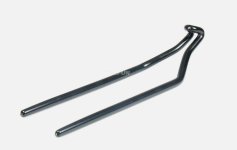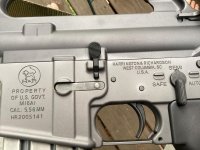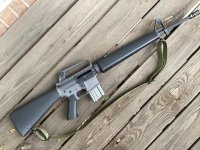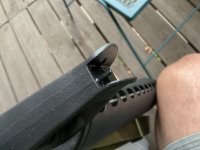I was issued an M16A1 just as the M16A2 was being introduced.
Given that I had a father and uncles who were all WWII and Korean War Vets as well as one who had used the M14 in Vietnam, and that I’d shot M1As and M14s in college and in service rifle competition, I was almost genetically biased against the M16.
However, I found as long as you mitigated its aversion to dirt it wasn’t a bad rifle. It was light, handy and very well balanced. I also found it was minute of torso accurate out to 350m and had no issues shooting a clean score with in on train fire ranges out to that distance.
—-
Unfortunately I also discovered the M16A2, while well intentioned, was a retrograde step:
- it added weight and bulk with no real benefit in performance, although the heavier barrel forward of the gas block and the round handguards made it more tolerant of abuse via an attached bayonet (that no one used anymore);
- the 1-7 twist rifling was used to allow the almost never fired M856 tracer round, when 1-9 twist was optimum for the M855 round, which reduced accuracy with both M855 and M193;
- the M855 round with its penetrator was less accurate than M193;
- the higher weight reduced velocity and consequently the threshold ranges for fragmentation and tumbling of the, bullet;
- the longer stock was even less amenable to use with body armor; and
- the rear sight added a long range capability that wasn’t practical and not in keeping with the comparatively poor accuracy of the average lot of M855.
Not surprisingly it was fairly quickly replaced by the M4, with a short barrel that made M855 even less effective, and the M4 quickly got a whole bunch of attachments that made it heavier than the original M16A1.
——
I eventually replaced my M1A with an AR-15 for service match competition. That was partly due to reducing ammo costs, but largely due to the ability to use 5.56mm reloads that were more accurate than issued match ammunition. You’ll note however it has the shorter A1 stock.
I also bought police department Colt SP1 and M16A1 upper halves when the department “upgraded” to M4 uppers (to be fair the shorter barrel works better as a patrol rifle, much the same as it worked better for mechanized troops) and put them on NDS-602 lowers. The original M16 and M16A1 configurations are still, IMHO, by far the best AR-15 configurations ever made when it comes to overall utility and flexibility.
I also like the AR-15 as a Varmint rifle when fitted with flat top receiver, a 20” bull barrel, a set trigger, and a suitable scope.

Given that I had a father and uncles who were all WWII and Korean War Vets as well as one who had used the M14 in Vietnam, and that I’d shot M1As and M14s in college and in service rifle competition, I was almost genetically biased against the M16.
However, I found as long as you mitigated its aversion to dirt it wasn’t a bad rifle. It was light, handy and very well balanced. I also found it was minute of torso accurate out to 350m and had no issues shooting a clean score with in on train fire ranges out to that distance.
—-
Unfortunately I also discovered the M16A2, while well intentioned, was a retrograde step:
- it added weight and bulk with no real benefit in performance, although the heavier barrel forward of the gas block and the round handguards made it more tolerant of abuse via an attached bayonet (that no one used anymore);
- the 1-7 twist rifling was used to allow the almost never fired M856 tracer round, when 1-9 twist was optimum for the M855 round, which reduced accuracy with both M855 and M193;
- the M855 round with its penetrator was less accurate than M193;
- the higher weight reduced velocity and consequently the threshold ranges for fragmentation and tumbling of the, bullet;
- the longer stock was even less amenable to use with body armor; and
- the rear sight added a long range capability that wasn’t practical and not in keeping with the comparatively poor accuracy of the average lot of M855.
Not surprisingly it was fairly quickly replaced by the M4, with a short barrel that made M855 even less effective, and the M4 quickly got a whole bunch of attachments that made it heavier than the original M16A1.
——
I eventually replaced my M1A with an AR-15 for service match competition. That was partly due to reducing ammo costs, but largely due to the ability to use 5.56mm reloads that were more accurate than issued match ammunition. You’ll note however it has the shorter A1 stock.
I also bought police department Colt SP1 and M16A1 upper halves when the department “upgraded” to M4 uppers (to be fair the shorter barrel works better as a patrol rifle, much the same as it worked better for mechanized troops) and put them on NDS-602 lowers. The original M16 and M16A1 configurations are still, IMHO, by far the best AR-15 configurations ever made when it comes to overall utility and flexibility.
I also like the AR-15 as a Varmint rifle when fitted with flat top receiver, a 20” bull barrel, a set trigger, and a suitable scope.

Last edited:






